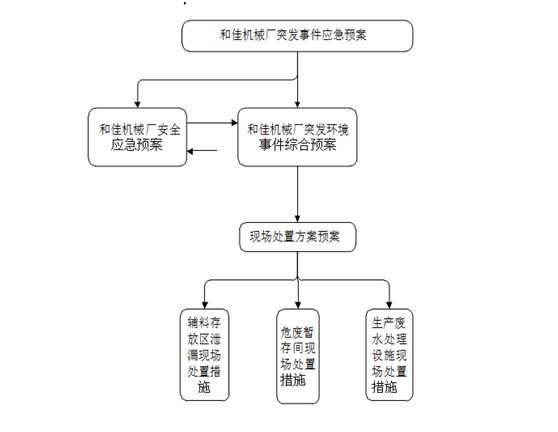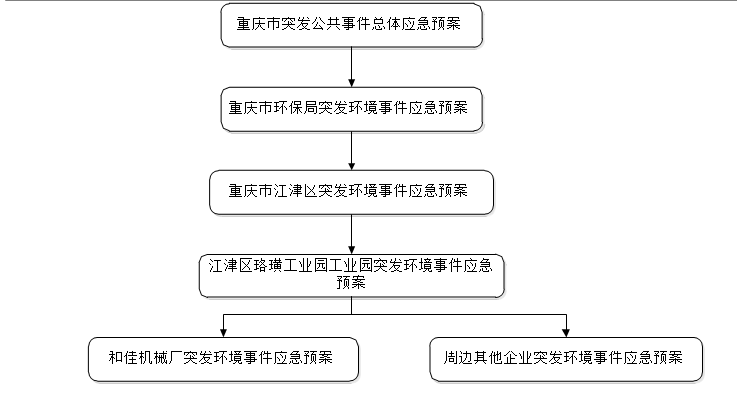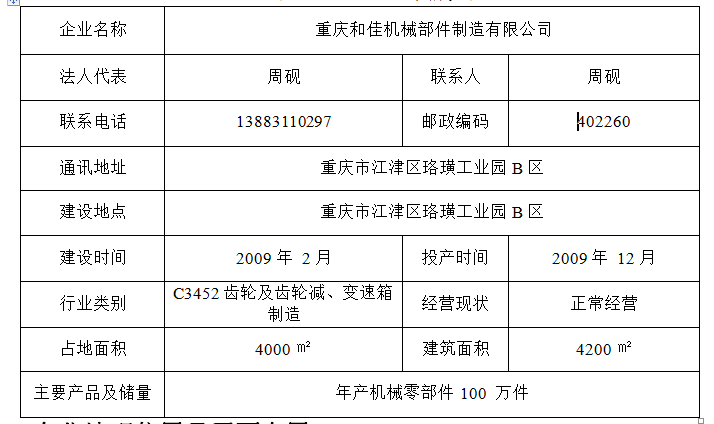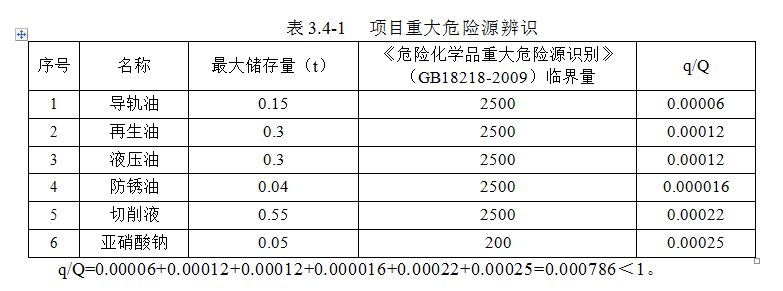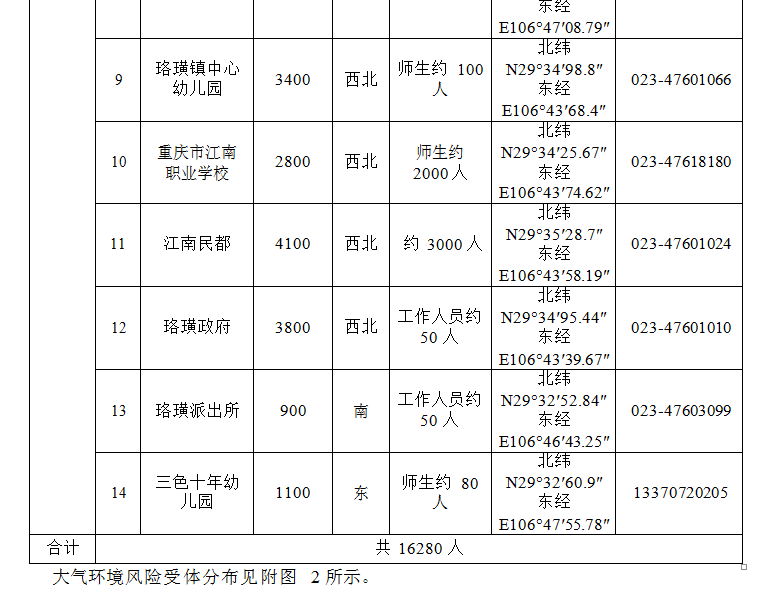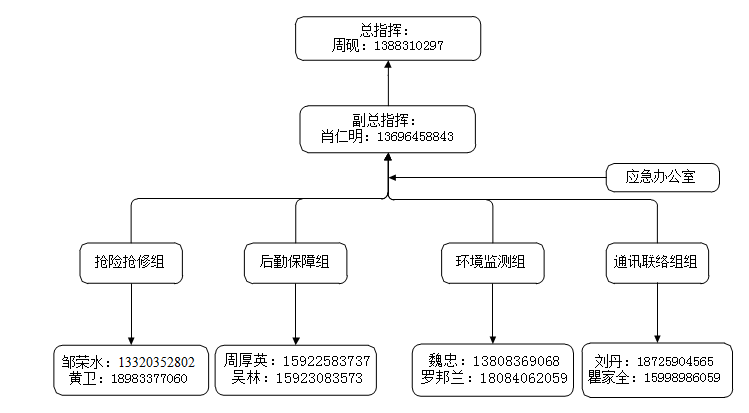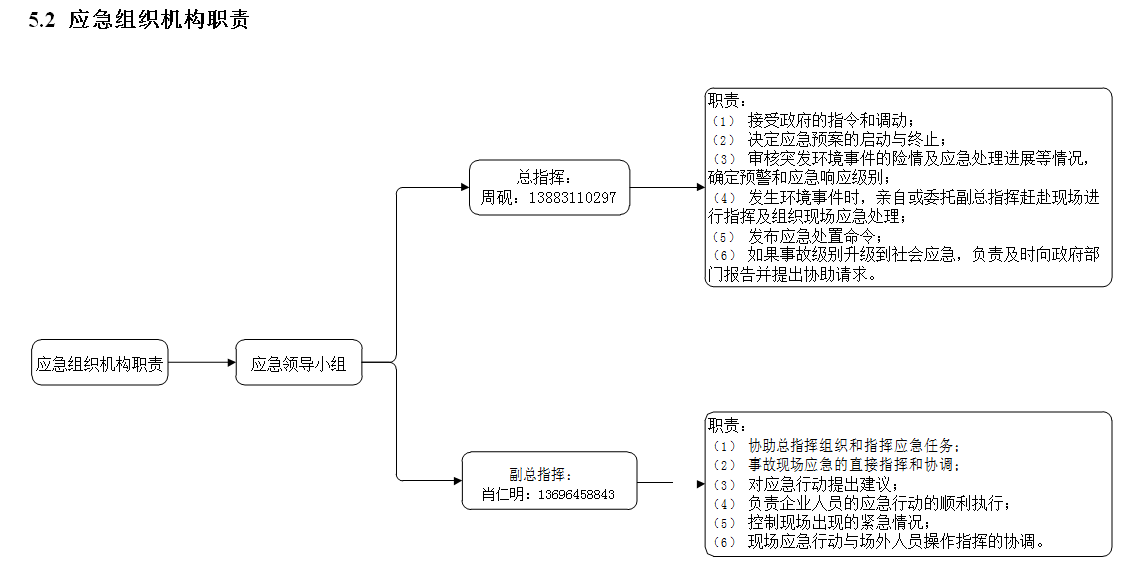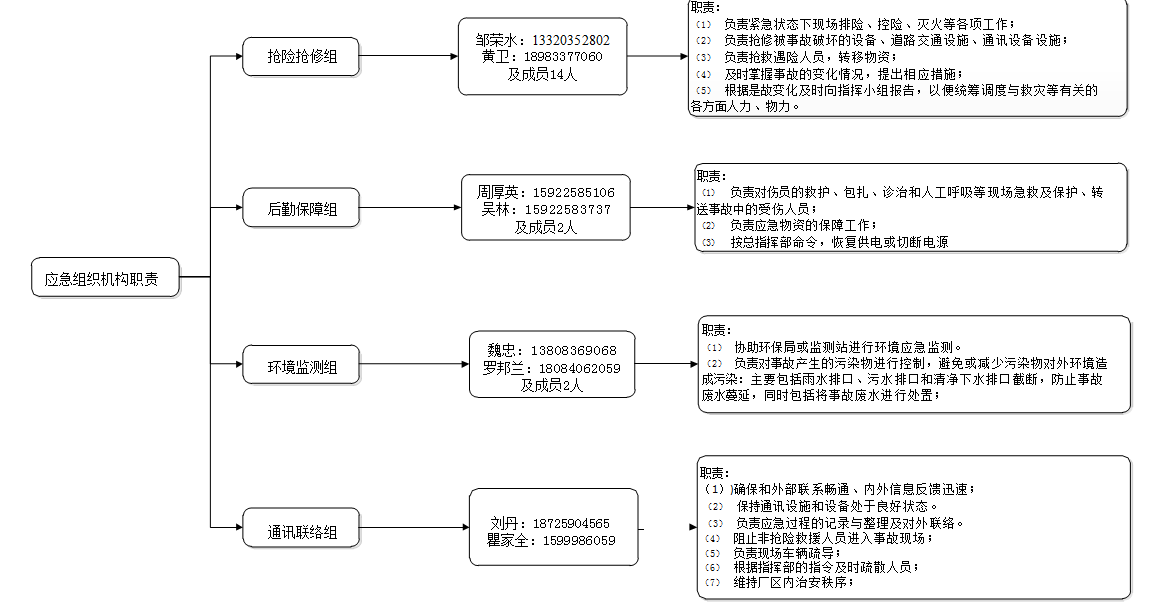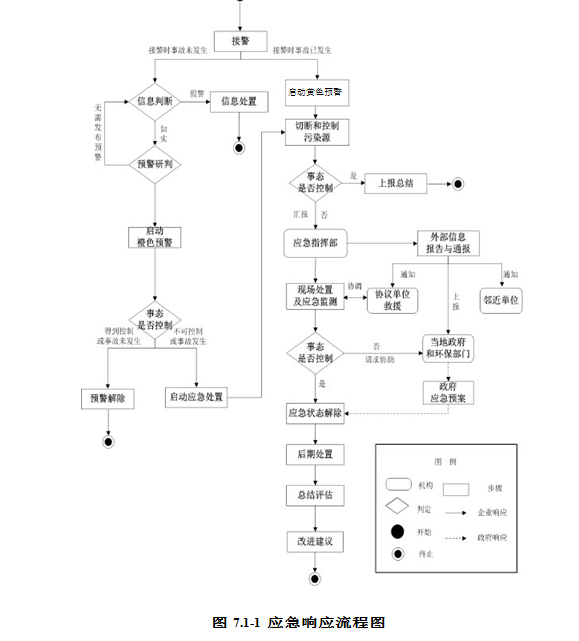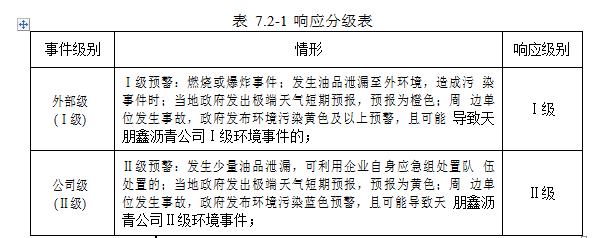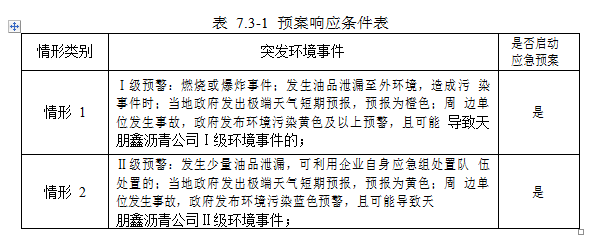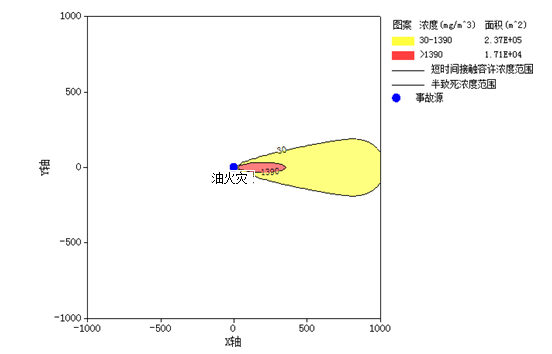Sampling and analysis: The Jiangjin District Ecological Environment Monitoring Station is responsible for monitoring sampling and analysis of environmental air and surface water in the accident area, as well as monitoring and analysis of sudden wastewater discharges.
Report: The Jiangjin District Ecological Environment Monitoring Center is responsible for providing analysis reports to the Jiangjin District Environmental Protection Bureau and the command center of the Jiangjin District Ecological Environment Monitoring Center every hour. The Jiangjin District Ecological Environment Monitoring Center is also responsible for completing and sending the overall report and dynamic report.
Based on monitoring results, determine the different hazard levels of toxic substances at different locations within the accident area. If it reaches a half-lethal inhalation concentration, immediate evacuation of on-site personnel should be organized through the command department, contacting medical, health, and other relevant departments for rescue work. If surface water or groundwater is contaminated, contact local government, water conservancy departments, health departments, etc., through the command department to initiate emergency measures to prevent social harm and panic.
7.4 Information Reporting and Disposal
7.4.1 Internal Reports
When a Level II sudden environmental event occurs, for example:
(1) Once employees discover sudden events such as oil leaks, fires, or explosions, they should immediately take measures to handle them and promptly report to the on-duty supervisor;
(2) Establish a 24-hour duty system. When the on-duty supervisor receives information about a sudden event, they should report it to the emergency commander immediately and notify other emergency personnel;
(3) The emergency commander should issue alerts regarding emergency evacuation and withdrawal based on the situation.
7.4.2 External reporting procedures
(1) If a Level I accident results in casualties or environmental pollution incidents, the overall commander should promptly report to government departments such as fire protection and environmental protection and inform surrounding relevant units and residents.
(2) In case of severe emergencies, the overall commander should personally inform the Jiangjin District government or heads of surrounding units about the situation and request organization for evacuation or assistance while maintaining phone contact at all times.
7.4.3 Information reporting deadline
When a sudden event occurs on-site, on-duty personnel should report to the on-duty supervisor immediately. The on-duty supervisor should report to the emergency commander based on preliminary assessment results. The emergency commander and deputy commander will determine the accident level based on assessment results. If it is a Level II accident, then they will organize internal employees for rescue work.
If it is a Level I accident, report to Jiangjin District Environmental Protection Bureau (phone: 023-47522457), government emergency office (phone: 023-49820372), and other relevant departments as quickly as possible. The report content mainly includes: name and address of the unit where this accident occurred, time and specific location of the incident, type of incident, cause of incident, process, progress status, basic situation regarding emergency measures taken as well as suggestions for further emergency measures and preventive measures needed; environmental pollution situation; accident loss situation; sensitive point pollution situation; contact person's name and phone number.
7.4.4 Report Content
If a Level I accident occurs, reports to external parties should include the following content:
(1) Name and address of the unit where the incident occurred;
(2) Time and specific location of the incident;
(3) Type of incident: such as toxic gas poisoning incidents, oil leaks, fires, explosions etc.;
(4) Characteristics of main pollutants and quantity of pollutants;
(5) Basic information regarding cause of incident, process, progress status as well as suggestions for further emergency measures and preventive measures needed;
(6) Key reports on oil leak quantity, impact range, near-surface wind direction, evacuation suggestions;
(7) Contaminated range already identified, potential hazard levels identified along with transformation trends; provide a schematic diagram showing possible sensitive point distributions that may be affected;
(8) Data already monitored along with suggestions for further monitoring plans etc.;
(9) Contact person's name and phone number.
If a Level II accident occurs internally in the factory area reporting content includes:
(1) Time and specific location of the incident;
(2) Type of incident: such as toxic gas poisoning incidents, oil leaks, fires explosions etc.;
(3) Characteristics of main pollutants and quantity of pollutants;
(4) Basic information regarding cause of incident process progress status along with suggestions for further emergency measures needed;
(5) Key reports on oil leak quantity impact range near-surface wind direction evacuation suggestions;
(6) Contaminated range already identified, potential hazard levels identified along with transformation trends; provide a schematic diagram showing possible sensitive point distributions that may be affected;
(7) Data already monitored along with suggestions for further monitoring plans etc.
7.4.5 24-hour emergency communication means
Hejia Machinery Company's sudden event alarm method relies on office landline (023-47607886). Each member's contact information is available in Attachment 1.
24-hour contact information is shown in Attachment 1.
Hejia Machinery Company ensures that mobile phones of emergency organization personnel are effective for 24 hours.
Emergency rescue team phones must be turned on for 24 hours; changing phone numbers at will is prohibited. In special circumstances where phone numbers change must be reported to Hejia Machinery Company's emergency command team within 24 hours from change date. The emergency command team must notify all members and departments about changes within 24 hours.
7.5 Emergency Preparedness
Before activating plans Hejia Machinery Company clarifies preparation work before launching emergency actions.
(Level II) accidents are initiated by issuing activation orders by overall commander holding emergency meetings contacting members from various emergency organizations etc.
I (Level I) accidents are initiated by issuing activation orders by environmental protection departments or government departments holding emergency meetings contacting members from various emergency organizations etc.
7.6 On-site Disposal
7.6.1 Leakage Accident Handling
(1) Emergency handling measures
(For minor oil leaks (Level II accidents):
① The discoverer of the accident should immediately block the leak and cut off the power switch in the factory area, while notifying the emergency commander.
② The emergency commander organizes the staff in the factory area to cover the leaked oil with sand.
③ For recoverable oil, the commander arranges staff to use containers that do not generate static electricity for recovery.
收。
④ For oil that cannot be recovered, cover its surface with sand and wait for it to be fully absorbed before cleaning up the sand. After the oil is fully absorbed, place the sand with oil stains in a designated location for professional treatment.
⑤ If there is a pipeline rupture, it can be blocked with cotton yarn, pure cotton mops, rags, etc. If the oil leaked from Hejia Machinery Company cannot be handled (Level I accident),
the overall commander of the factory should promptly organize staff to maintain the scene, prohibiting unrelated personnel from approaching, and wait for emergency experts to provide further guidance.
Isolation and evacuation
(2) II
In the case of a Level II accident, the overall commander of the factory will guide the evacuation, prohibiting personnel outside the factory from approaching, checking and removing all fire sources and power sources near the factory. In the case of a Level I accident, guidance for evacuation will be provided by environmental protection or government departments, waiting for emergency experts to give instructions on-site.
I On-site first aid
(3) If personnel are contaminated or soaked with oil during the accident handling process, immediate fire prevention measures should be taken: In summer, rinse with clean water and change clothes immediately; in winter, remove soaked outerwear, shoes, and socks, wash with a large amount of flowing clean water, and change clothes promptly.
Precautions
(4) While handling an accident, it is essential to ensure that access to strong oxidizers is absolutely prohibited. Secondly, sand and oil-absorbing cotton that have fully absorbed oil must be placed and handled strictly according to regulations to avoid environmental pollution and additional accidents. After an accident occurs, it is necessary to analyze and investigate the accident seriously according to the principle of 'four no releases', hold accountable those responsible for the accident, and educate the public.
Fire accident handling
7.6.2 Fire Emergency Handling
(1) When a fire occurs, determine whether to initiate a Level II or Level I accident response based on the size of the fire.
In case of a Level I accident:
In the case of a Level II accident, the overall commander of the factory will guide the evacuation, prohibiting personnel outside the factory from approaching, checking and removing all fire sources and power sources near the factory. ① In case of fire or explosion, first quickly extinguish the fire source, evacuate relevant personnel in time, and provide medical assistance to the injured.
② The initial stage of a fire is the best time for rescue. Personnel in the area where the fire occurs should seize this opportunity to extinguish it as soon as possible.
In case of a Level I accident:
① Immediately call '119' to report.
② Timely report to relevant higher authorities and leaders.
③ Promptly direct and guide employees to evacuate from the accident area according to predetermined routes and methods.
④ In case of employee casualties, immediate rescue should be carried out by evacuating injured personnel from dangerous areas while calling '120' for help.
Emergency handling measures and isolation evacuation
(2) When a fire occurs, remain calm. Depending on the size of the fire. If it is small (Level II accident),
the on-site command should immediately organize rescue personnel to control the fire and extinguish it as soon as possible. If it is large (Level I accident),
when the fire is too large to extinguish, all personnel should quickly evacuate to a safe area and ensure their own safety while being counted by on-site command. Wait for external rescue teams.
If someone at the fire scene is poisoned or suffocated or burned, immediately rescue them to a fresh air safe area; if breathing stops, artificial respiration should be implemented immediately. Burn victims should protect their wounds and prevent secondary injuries; if there are external bleeding injuries, they should be bandaged immediately. Once hospital emergency personnel arrive, further treatment can be provided. If a fire occurs, injured personnel should be moved to an upwind safe area for rescue to avoid major fires or explosions at the accident scene that could trap rescuers.
(3) If personnel are contaminated or soaked with oil during the accident handling process, immediate fire prevention measures should be taken: In summer, rinse with clean water and change clothes immediately; in winter, remove soaked outerwear, shoes, and socks, wash with a large amount of flowing clean water, and change clothes promptly.
① Rescue measures must be implemented only after clarifying fire conditions.
(4) While handling an accident, it is essential to ensure that access to strong oxidizers is absolutely prohibited. Secondly, sand and oil-absorbing cotton that have fully absorbed oil must be placed and handled strictly according to regulations to avoid environmental pollution and additional accidents. After an accident occurs, it is necessary to analyze and investigate the accident seriously according to the principle of 'four no releases', hold accountable those responsible for the accident, and educate the public.
② Appropriate protective measures must be taken.
③ After firefighting operations are completed, each area must be cleared one by one; only after confirming there are no hidden dangers can vehicles and personnel leave in an orderly manner.
④ Immediately replenish firefighting equipment and agents so they are always ready for action.
When lubricating oil encounters open flames or high temperatures causing a fire accident, combustion products such as CO, CO2, smoke dust, and incompletely burned hydrocarbons will diffuse into the external environment without significantly affecting atmospheric conditions. In case of tank fires, it can lead to three-dimensional fires with large amounts of CO and dense smoke being emitted at high altitudes; flames can reach dozens of meters high. However, due to favorable diffusion conditions, most pollutants are released into high altitudes; ground-level CO concentrations generally do not exceed half-lethal concentrations.
7.6.3 Secondary Environmental Incidents from Fire
During firefighting operations for accidents that may produce large amounts of dry powder, sand, and oily substances as solid waste; if these are randomly discarded or discharged after an incident, they will cause secondary pollution to the environment.
In case of water pollution incidents, it is most likely that oil pollution enters Ganzi Creek affecting water quality. Investigations show that there are no water sources within a range of 3 km upstream from Hejia Machinery Company. Within a downstream range of 10 kilometers there are three drinking water source protection areas: at a distance of 6 km there is Dazukou District's Yangtze River Fengshou Dam water source; Banan District's Yangtze River Dajiang Water Plant water source; at a distance of 9 kilometers is Banan District's Longzhou Bay water source. Therefore, in case of water pollution incidents, there will be harm to drinking water sources and aquatic life in Ganzi Creek.
Involving large amounts of oil leakage leading to combustion or explosion accidents affecting sensitive points around the factory requires evacuation and isolation measures.
7.7 Rescue, Relief, and Control Measures
Upon hearing evacuation alarms for personnel, factory staff should quickly and orderly evacuate dangerous areas under the leadership of the emergency commander and gather at designated locations to avoid casualties. Before evacuating from dangerous areas, factory staff should use minimal time to shut down power sources and pipeline valves that could cause larger accidents. In serious situations notify surrounding crowds to prepare for evacuation; if necessary conduct emergency evacuations.
7.7.1 Personnel Evacuation Plan
When the evacuation alarm was heard, the personnel in the factory area quickly and orderly evacuated the dangerous area under the leadership of the emergency commander, and gathered at the designated location to avoid casualties. Before evacuating, the factory staff should use the shortest possible time to close the power supply and pipeline valves that may cause greater accidents in the area. Notify the surrounding crowd to prepare for evacuation when the situation is serious, and evacuate urgently if necessary.
(1) Evacuation of personnel at the accident site
The on-duty person in charge should organize the orderly evacuation of personnel in the factory area to a safe zone, starting with the most dangerous section first, ensuring mutual support, and indicating the assembly point based on wind direction. Personnel should gather at the safe location, promptly count the number of people, and report the personnel situation to the overall commander. If there are missing persons, the names of the missing employees and their locations before the accident should be reported, and the overall commander should immediately send someone or fire personnel into the accident area to search for missing persons while providing first aid and paying attention to their own safety.
(2) Reports from rescue personnel before and after evacuation
Personnel responsible for rescue and medical assistance should immediately bring rescue and protective equipment to the scene after receiving notification from the command group, waiting for instructions and following orders. The team leader will assign tasks and enter the incident point in batches for rescue or medical assistance. Before entering the accident site, the team leader must report the number and names of each batch of participating rescue personnel to the overall commander and register them.
After completing their tasks, the team leader reports to the overall commander on the execution of tasks and the safety status of rescue or medical personnel, requesting an evacuation order. The overall commander will make an immediate decision on whether to evacuate or continue rescue or medical assistance based on the control situation of the accident. If the team leader receives an evacuation order, they will lead rescue or medical personnel to evacuate from the accident site to a safe area, count personnel, and report to the overall commander.
(3) Methods of evacuation for personnel in surrounding areas
When an accident threatens surrounding sensitive points, the command group will notify local government, surrounding units, and residents by phone or by sending personnel to deliver alerts. In case of severe emergencies, surrounding personnel will be informed by phone to evacuate promptly, while directly contacting government officials and heads of surrounding units through the overall commander, who will personally release messages to government or responsible persons, requesting organization for evacuation or assistance. When releasing messages, it is essential to communicate the urgency of the situation and provide specific methods, ways, and routes for evacuation. The evacuation methods should clearly outline preventive measures to be taken, precautions, evacuation directions, and distances. Evacuations should generally follow planned routes in an organized manner.
